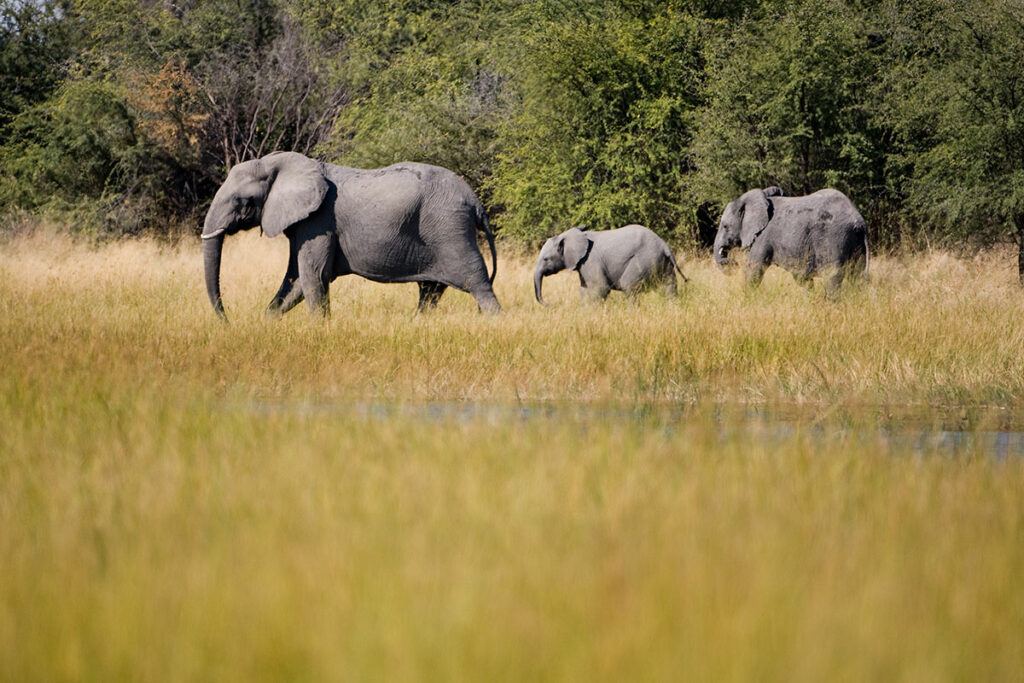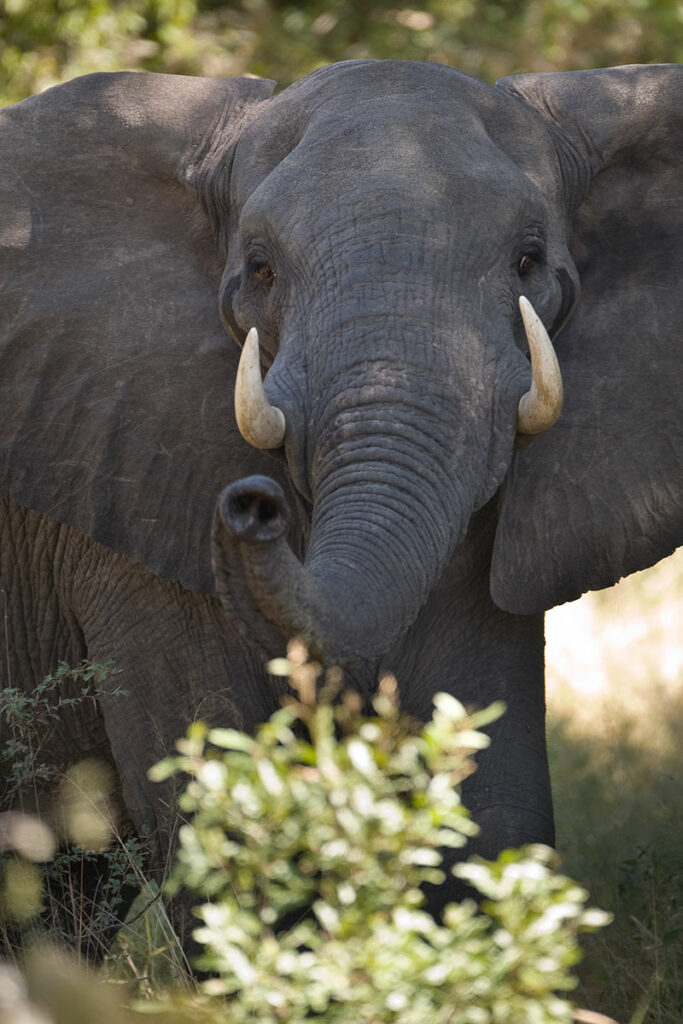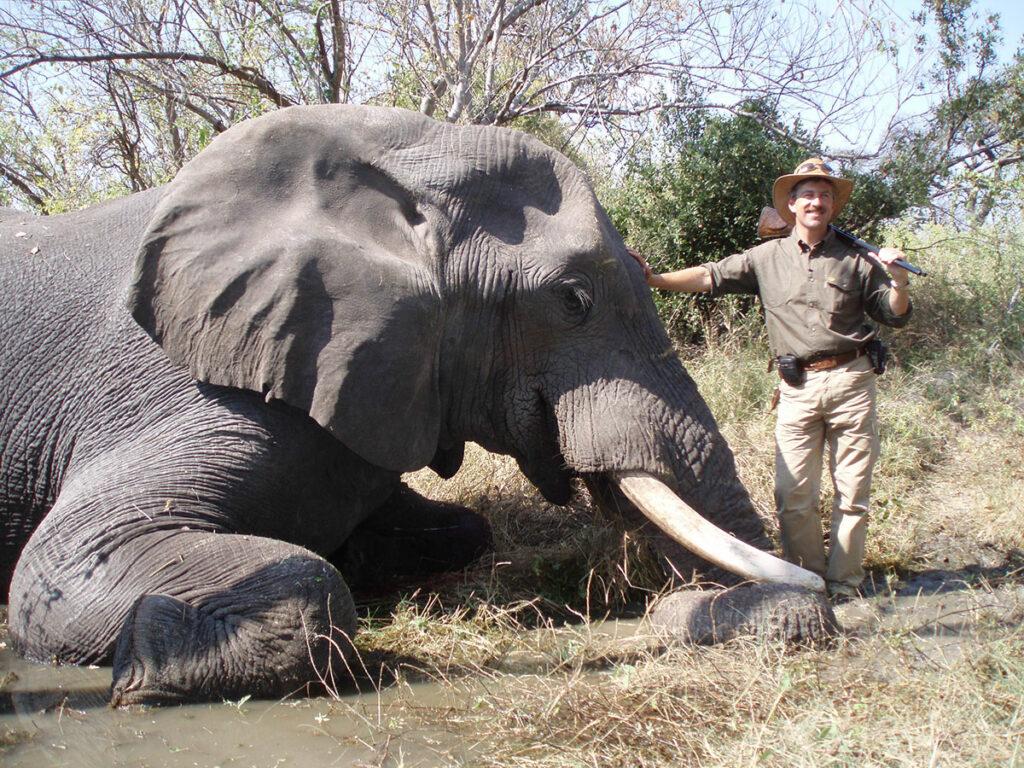Elephant Miles – Part 2
But before our hunt begins, we visit a nearby hunting camp in the conservancy where Pete Fick, a professional hunter and instructor in a country famous for producing the best ph’s in Africa, happens to be staying. But it is a solemn occasion—as if Zayne is a driver’s ed instructor taking me to the scene of a fatal crash to make a lasting impression–for Pete’s long-time tracker was killed by an elephant only days before our arrival. Fick was conducting a leopard and plains game safari and his client had taken a beautiful leopard on the third day of the trip. They then began to look for plains game and discovered an exceptional warthog. It was the kind of chance encounter that usually only lasts a hundred yards or so, but the pig was uncooperative so they pursued it deeper into the bush.

Then, in the kind of elephant encounter that has become the hallmark of the Save elephants, they spotted a bull 150 yards away. It lifted its trunk like a periscope, catching the party’s wind. In an instant, from that great distance, the bull immediately charged. Pete had left his Land Cruiser with only a .30-06 to shoot a warthog. As the bull approached, his tracker, Jorum, led the father-daughter clients in a sprint back to the vehicle. In the meantime, Pete shot the elephant between the eyes, and while not a lethal hit, it diverted the bull and it began running off. Sadly–tragically–the bull diverted in the direction of Jorum who had taken the clients back to safety and was returning to check on Pete. In that process, the elephant winded Jorum finding him and killing him in seconds.
“I never leave the vehicle without a big-caliber rifle,” says Pete, fighting tears. “This was the one time, and I’m the one who always tells other professional hunters never to be without a stopping rifle.” He shares the emotional interview as a cautionary tale, using his own pain to teach others in the hopes they won’t endure what he and Jorum did.
The professional dangerous game hunter-tracker relationship is perhaps the closest bond in the hunting world, for they’re brothers of the foxhole of sorts, depending on one another when their lives are on the line. Many an African ph owes his bacon to an unheralded tracker. Tip them well.
“Two out of three people who are hit by elephants are dead,” says Zayne. “One out of 14 hit by a lion are killed…you tell me which one is more dangerous?” And it’s the cows that are especially dangerous—particularly tuskless cows that seem to possess an extra ornery gene.
As we move through the conservancy’s prime elephant country, we approach numerous younger bulls, a nerve test of sorts that is a prelude to finally moving in close on a bull you’re going to attempt to take. It’s a common practice and provides a chance for a ph—and you—to see if you need to pack an extra pair of shorts. The first bull I walk up to seems more curious at first, swinging his head gently back and forth. Then, in a bi-polar mood change, the damn thing charges to within 20 feet, trumpeting and flaring his ears for added effect. My safety was off and the bead of the .416 was trained between his eyes and there was ever-so-slight pressure on the trigger. The problem with a mock charge is that you sometimes don’t know it’s a bluff until it’s too late. The cheeky juvenile ambles off sufficiently pleased with its performance.

We keep moving, looking for a mature bull at least 40-years old with ivory that hasn’t been busted from fighting. Such an animal will have a very weathered print with cracks and crevices as unique to that animal as a fingerprint is to each human.
“I want to be able to fit two of my foot prints lengthwise inside of its track or I’m not interested in following it,” says Zayne. For every pound of ivory, as the old ivory hunter’s adage goes, a hunter will walk a mile to find that elephant. I don’t have empirical verification of that statement, but it sounds about right from my experience tracking the beasts across Africa since my first elephant hunt with Zayne.
The life of the hunt is found in the adventure of the journey and while days spent tracking elephant are long and tiresome, a man will never travel miles more memorable in his whole life. Catch up to one of the monsters after tracking it for eight or nine hours and it must be comparable to what a sub commander feels after finally locating an enemy battleship.
For two days, we have been tracking a herd of perhaps 20 elephants with one decidedly large track that was far more substantial than anything we have found thus far. Zayne is determined that we catch up to this herd because it is clear this is exactly the mature bull for which we are looking. The first day ends with the herd moving to a waterhole and then disappearing into the thorns as darkness falls. We opt to return the next day to pick up the tracks and see if we can finally catch up to the vagabond herd. After about five hours of tracking the second day—about the time it seems as if the elephants had become migratory—we spy the flicker of a tail ahead in the mopane thicket.
“They’re just ahead, Chris.”
We finally catch up to them, but the cover is so thick it’s impossible to immediately discern where the herd starts and where it ends. We have to move in closer to sift through the group to try and locate the bull that’s been leaving the outsized tracks. In so doing, however, we risk being winded, which will undoubtedly send the herd into a panic—question is, which way will they run…to or from us? We ease to within 40 yards as a cow raises her trunk, catches our scent and spins toward us charging and trumpeting to within 15 yards before stopping and rejoining the herd. There is chaos in the herd now as the cows reposition between their calves and us, taking turns mock charging us. Zayne has seen this show before and stands his ground before sliding further up the outside of the herd. I, on the other hand, am as twitchy as a rat in a cobra’s cage.
“The bull is here somewhere, we must find him before they run.”
There, at the back of the herd, the bull is standing looking at us in the midst of the mopane trees. The cows start to move between us and the patriarch, as if to surround the bull like a Secret Service detachment.

“Come quickly,” says Zayne, moving toward the bull that has squared off and is facing us with ears flared. I move to within 10 yards and the bull has had enough and comes for us, but the 400-grain bullet sends him crashing to earth in an instant, sending a cloud of dust into the air like a land mine exploding.
“Back of the head,” says Zayne as we sprint behind the bull to put another round into the brain as added insurance.
As the dust settles and the fog of so many years wondering about elephant hunting clears, I finally understood what the professional hunter around the campfire meant so many years ago. There simply is nothing like elephant hunting—mostly because there is no animal like an elephant. And if you care for them and want to see them flourish in the future, you must tell the world that there is no difference between elephant hunting and elephant conservation.
That is our inconvenient truth.–Chris Dorsey

